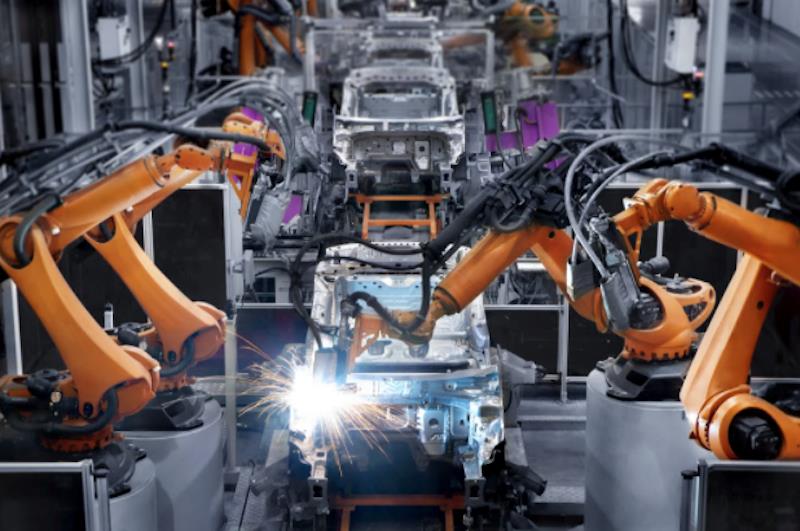
Robot Applications in Auto Manufacturing
April 22, 2021 by Polly Leave a Comment
Robots have been used in automotive assembly lines for over 50 years. And now, automakers are using robotics in even more processes.
Why robots? They are efficient and dependable in production lines. They also bring supply chain automation to the automotive industry and make it one of the largest users of robots.
It's not easy to build vehicles because they have thousands of wires and tiny parts. Robots help ensure that each component is where it should be. Here are different robotic applications in auto manufacturing:
1. Robotic Vision
Robots with 'eyes' can do very precise work because they have the ability to 'see' what they are doing. An industrial robotic arm can feature a laser and camera, providing instant feedback and helping highlight any problems.
A robot can perform offsetting during parts installation because it knows where every part goes. Robots with robotic vision are now being used to install windshields, fenders, and door panels because they are more accurate than regular robotic arms.
2. Car Painting
Automotive painting is neither easy nor harmless. The chemicals produced by auto body paint can harm both our lungs and our skin.
Some auto paints contain isocyanates, especially two-part polyurethane-based paints. These chemicals are very toxic to the skin and lungs. And while skilled, professional painters can do a very unique job, labour shortages sometimes make it hard to find skilled workers.
Robots, especially robotic arms, can get the job done because it entails consistency. Robotic arms can paint precisely, covering large areas and minimizing waste. Robots can also be used to spray sealants, primers, and adhesives.
3. Welding
Big industrial robots with higher payload capabilities can perform spot welding on heavy body panels. Mounts and brackets can be welded by small robots with short arms.
Robotic tungsten inert gas welders are able to position the torch the exact same way every time. And because of the speed gap and repeatable arc, it's possible to preserve high welding standards in every welding job.
There are also collaborative welder robots that work together with other robots on big assembly lines. They collaborate with the handler robots to keep assembly lines moving. The robotic handlers place the body panels at precise locations then the welding robots perform all the programmed welds.
Robots Are Transforming Auto Manufacturing
Robots are now used in parts manufacturing and assembly operations. They are more accessible than they were a decade ago, and deploying a robot workforce today is easy. Robots make assembly lines more efficient, and they are now present in every auto sector, from manufacturing to car loans to self-driving .
The good thing is robots don't take jobs away from human workers. Humans are needed in many sectors of auto manufacturing, like making the final touches and quality control. When human creativity and flexibility is combined with robotic precision, the limits in automotive production are endless.
Legal Disclaimer:
MENAFN provides the
information “as is” without warranty of any kind. We do not accept
any responsibility or liability for the accuracy, content, images,
videos, licenses, completeness, legality, or reliability of the information
contained in this article. If you have any complaints or copyright
issues related to this article, kindly contact the provider above.


















Comments
No comment